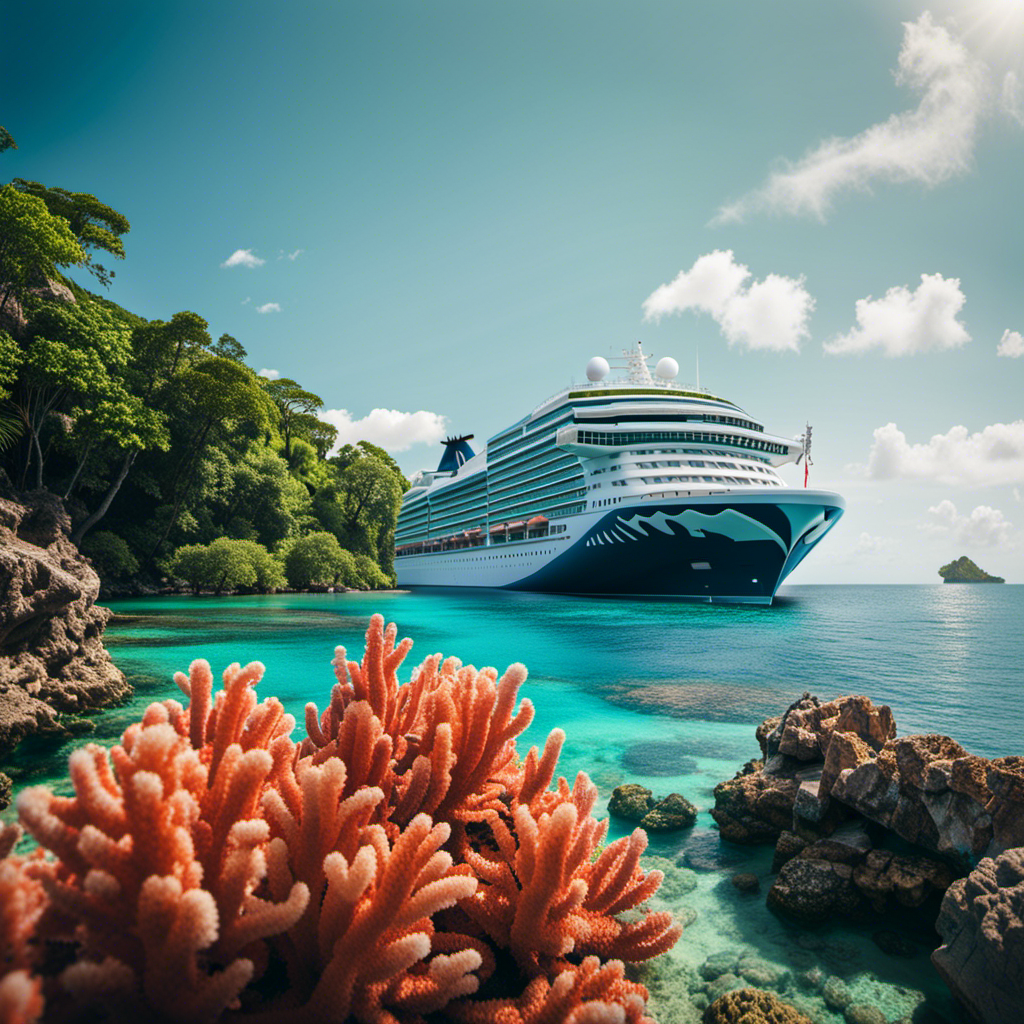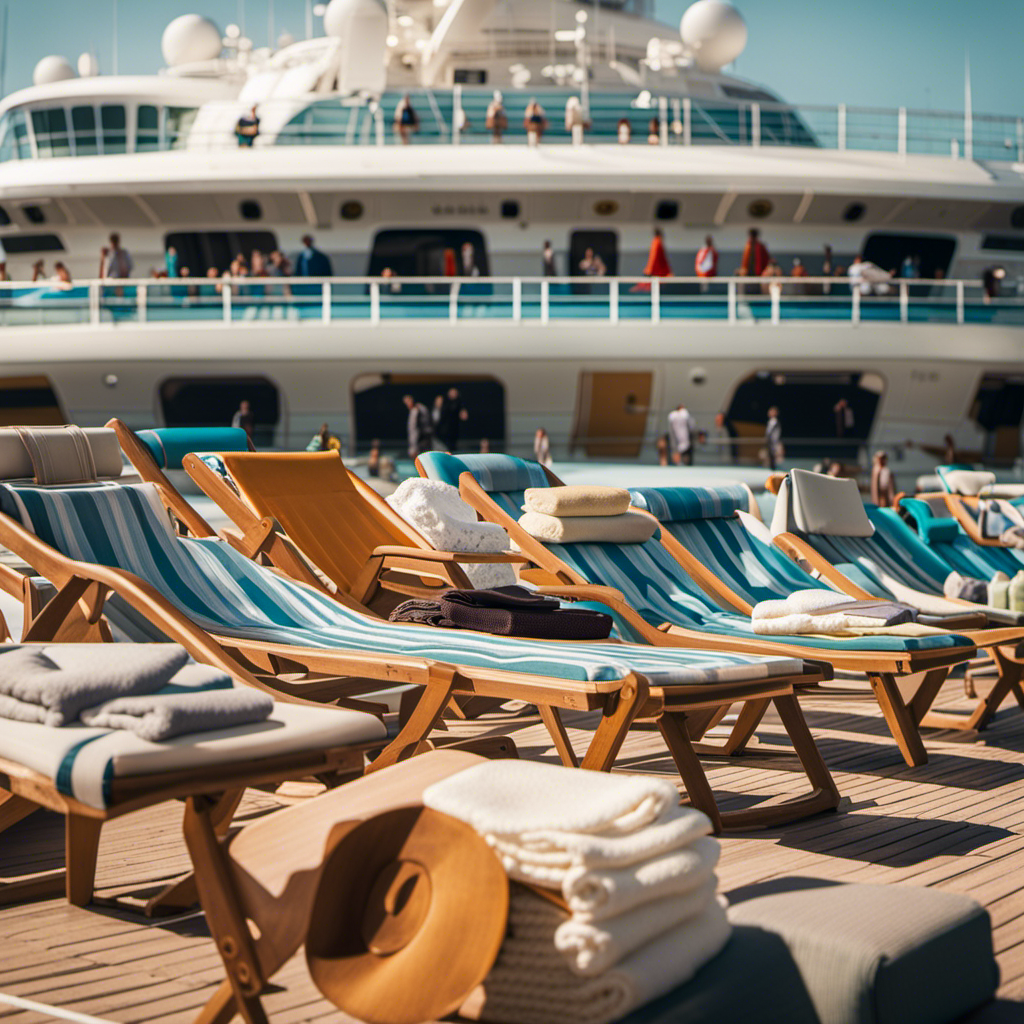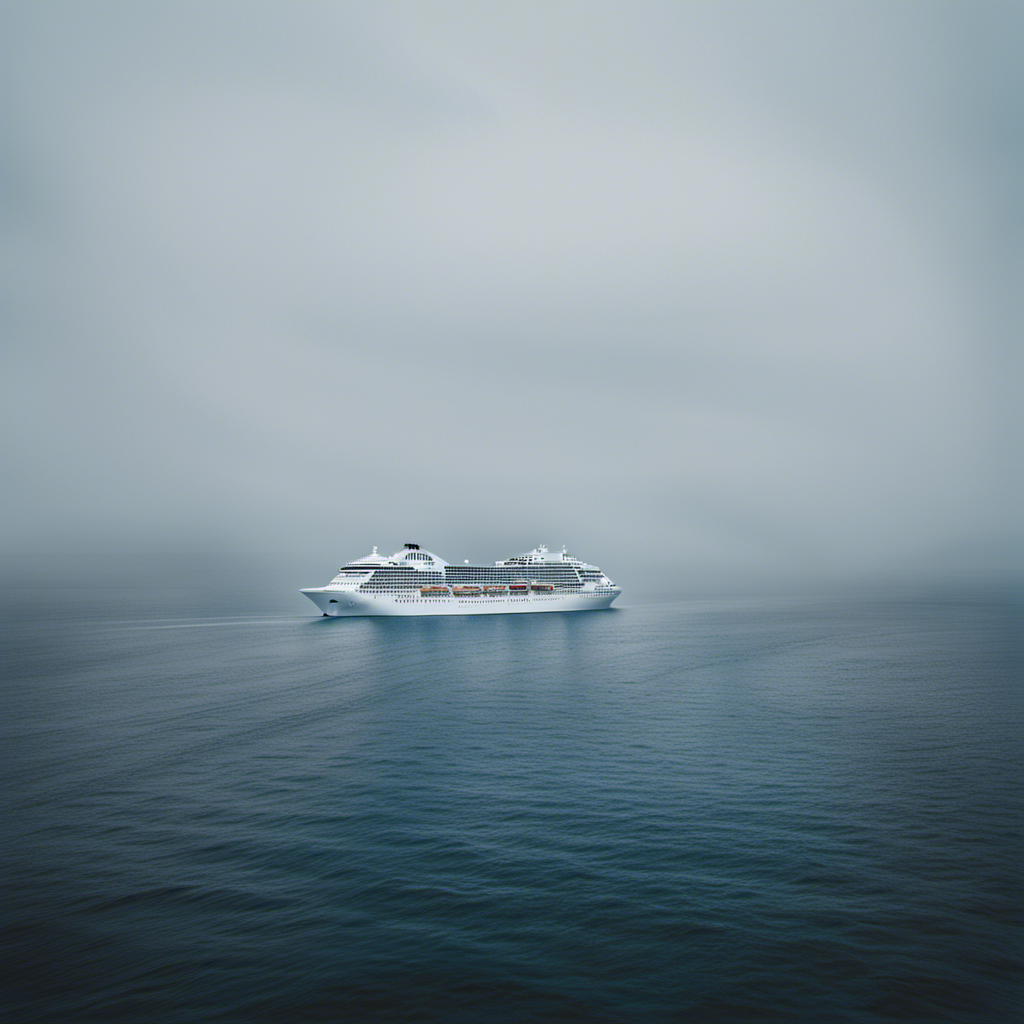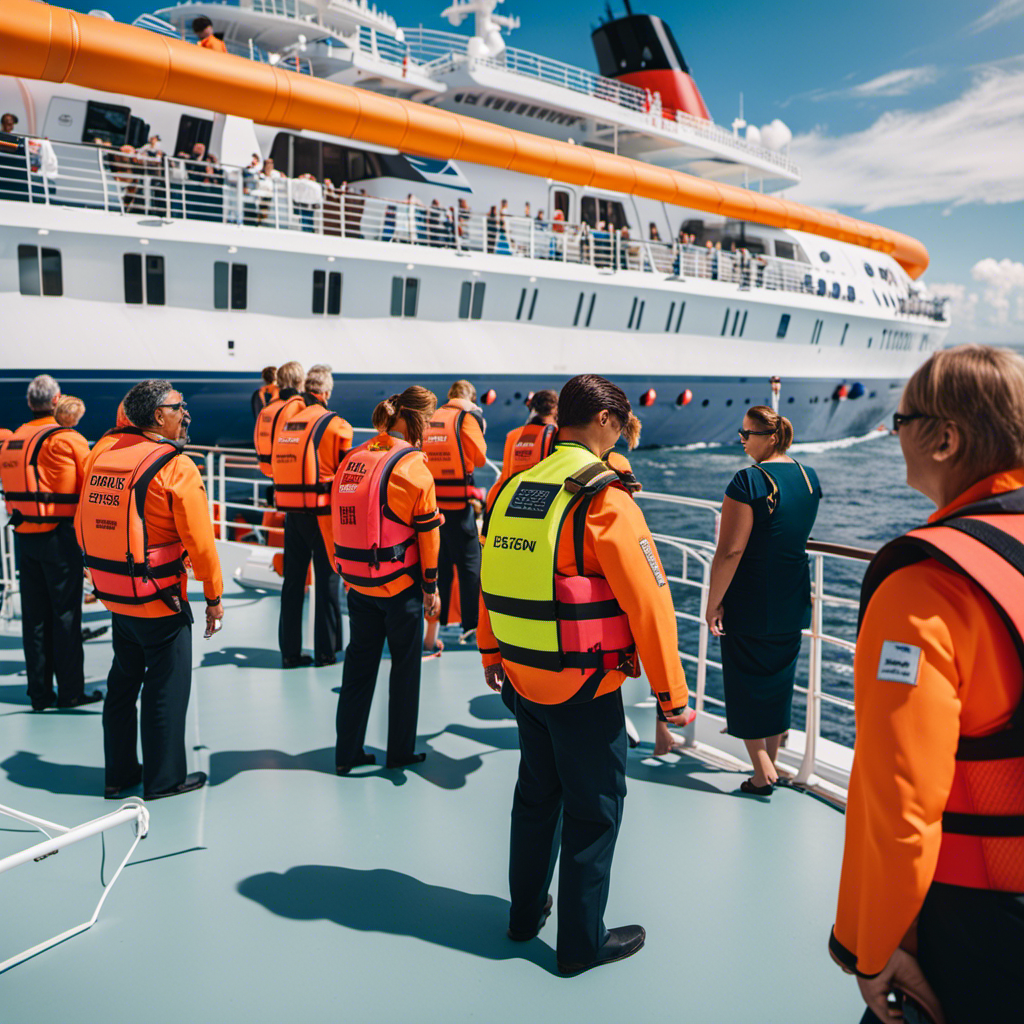As a member of the cruise industry, I’m excited to share our pledge to attain net-zero carbon emissions across global cruising. Our goal is to balance the carbon we produce with its elimination or offset by 2050.
We are investing in cleaner technologies, implementing practices to reduce waste and pollution, and exploring alternative fuels. Through collaboration with governments and international organizations, we are driving sustainability and sharing best practices to create a more environmentally friendly cruise industry.
Together, we can make a global impact and reach net-zero carbon.
Key Takeaways
- CLIA, the prime voice of the global cruise industry, is committed to pursuing net-zero carbon for global cruising.
- The cruise industry aims to achieve net-zero carbon emissions by 2050, balancing carbon emissions with carbon removal or offsetting.
- Cruise lines are investing in cleaner and more efficient technologies, such as advanced wastewater treatment systems and exploring alternative fuels.
- Collaboration among cruise lines, industry associations, and stakeholders is crucial in addressing environmental challenges and creating a more sustainable and environmentally friendly cruise industry.
CLIA’s Commitment to Net-Zero Carbon
I’m committed to achieving net-zero carbon emissions by implementing sustainable practices in the cruise industry. CLIA, the prime voice of the global cruise industry, shares this commitment.
They have initiated several programs to reduce carbon emissions and promote sustainability. CLIA’s initiatives for carbon reduction include investing in cleaner and more efficient technologies, such as advanced wastewater treatment systems and exploring alternative fuels.
Additionally, CLIA has formed partnerships with industry associations and stakeholders to drive sustainability. Collaboration is crucial in addressing environmental challenges, and CLIA is working with governments and international organizations to achieve this goal.
The Cruise Industry’s Global Impact
Collaborating with governments and international organizations, we are working towards creating a more sustainable and environmentally friendly cruise industry.
Through global partnerships and international regulations, the cruise industry is committed to reducing its environmental impact and achieving net-zero carbon emissions. This commitment has a significant global impact, as cruise lines from around the world come together to address environmental challenges.
By sharing best practices and knowledge, the industry aims to drive sustainability and create a more responsible and eco-friendly cruising experience. The implementation of environmental technologies and practices, such as advanced wastewater treatment systems and exploring alternative fuels, showcases the industry’s dedication to reducing waste and pollution.
With progress already being made in reducing carbon emissions through energy-saving measures and investments in shore power infrastructure, the cruise industry is determined to continuously improve and innovate to reach its net-zero carbon goal.
Environmental Technologies and Practices in the Cruise Industry
Investing in cleaner and more efficient technologies, cruise lines are actively implementing practices to reduce waste and pollution in the industry. As part of their commitment to sustainability, cruise lines are adopting advanced wastewater treatment systems to minimize the impact on marine ecosystems.
Additionally, they are exploring alternative fuels to reduce carbon emissions and decrease their environmental footprint. These efforts are supported by the 2022 Global Cruise Industry Environmental Technologies and Practices Report, which highlights the industry’s progress in adopting environmentally friendly technologies.
Cruise lines have also implemented energy-saving measures on their ships and invested in shore power infrastructure to reduce emissions while docked. Through collaboration with industry partners, cruise lines aim to continuously improve and innovate, working towards the industry’s net-zero carbon goal.
Progress Towards Achieving Net-Zero Carbon
Making significant strides towards our net-zero carbon goal, progress has been achieved in reducing carbon emissions through the implementation of energy-saving measures and investments in sustainable solutions.
- Increased use of renewable energy sources, such as solar and wind power, has helped to decrease carbon emissions.
- Improved energy efficiency in ship design and operations has led to significant reductions in fuel consumption and greenhouse gas emissions.
- Adoption of advanced wastewater treatment systems has minimized the impact on marine ecosystems.
- Implementation of shore power infrastructure has reduced emissions when ships are docked.
- Collaboration with industry partners and stakeholders has fostered innovation and the development of sustainable technologies.
These net-zero carbon initiatives and strategies for carbon reduction demonstrate the cruise industry’s commitment to environmental sustainability.
Global Collaboration for a Sustainable Cruise Industry
As a member of the cruise industry, I am actively engaged in working with international partners to create a sustainable and environmentally friendly future for our industry.
Collaborative initiatives and sustainable partnerships play a crucial role in achieving this goal. The cruise industry recognizes the need to address environmental challenges and is committed to pursuing net-zero carbon emissions by 2050.
Through collaboration with governments and international organizations, we are sharing best practices and knowledge to drive sustainability. Our industry is investing in cleaner technologies, such as advanced wastewater treatment systems and exploring alternative fuels to reduce carbon emissions.
Progress has already been made in reducing carbon emissions through energy-saving measures and shore power infrastructure.
Frequently Asked Questions
How Does the Cruise Industry Define and Measure Net-Zero Carbon Emissions?
Defining net-zero carbon emissions means balancing carbon emissions with removal or offsetting. Measuring emissions involves tracking and quantifying the amount of carbon released by the cruise industry. It’s crucial for creating a more sustainable and environmentally friendly industry.
What Are Some Specific Examples of Sustainable Practices That Cruise Lines Have Implemented to Reduce Their Environmental Impact?
Cruise lines have implemented waste reduction strategies to reduce their environmental impact. Initiatives include recycling programs, waste management systems, and energy-saving measures. These sustainable practices aim to create a more environmentally friendly cruise industry.
How Is the Cruise Industry Addressing the Challenge of Waste Management and Pollution Reduction?
The cruise industry is addressing waste management and pollution reduction through innovative solutions and strategies. We are implementing advanced wastewater treatment systems and exploring alternative fuels to minimize environmental impact and ensure a sustainable future.
What Are Some Alternative Fuels That Cruise Lines Are Exploring to Reduce Carbon Emissions?
Cruise lines are exploring alternative fuels like LNG, biofuels, and fuel cells to reduce carbon emissions. These efforts contribute to the industry’s overall goal of achieving net-zero carbon by 2050.
How Are Cruise Lines Collaborating With Industry Partners to Develop Sustainable Solutions and Reach the Net-Zero Carbon Goal?
Cruise lines are collaborating with industry partners to develop sustainable solutions and reach the net-zero carbon goal. Through partnerships and advancements in sustainable technology, we are working together to reduce emissions and create a more environmentally friendly cruise industry.
Claire, a creative soul with an unquenchable thirst for storytelling, is an integral part of the Voyager Info team. As a dedicated writer, she weaves captivating narratives that transport readers to enchanting cruise destinations and beyond.
Claire’s love affair with writing began at an early age when she discovered the magic of words and their ability to craft worlds and emotions. Her innate curiosity led her to explore various literary genres, but it was travel writing that truly captured her heart. Drawing inspiration from her own globetrotting adventures and encounters with diverse cultures, Claire embarked on a journey to become a travel writer par excellence.











